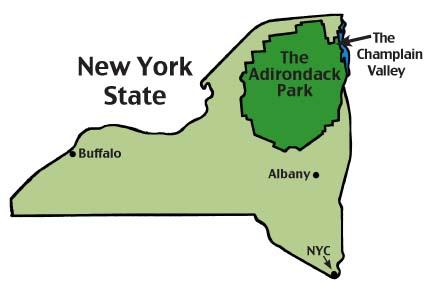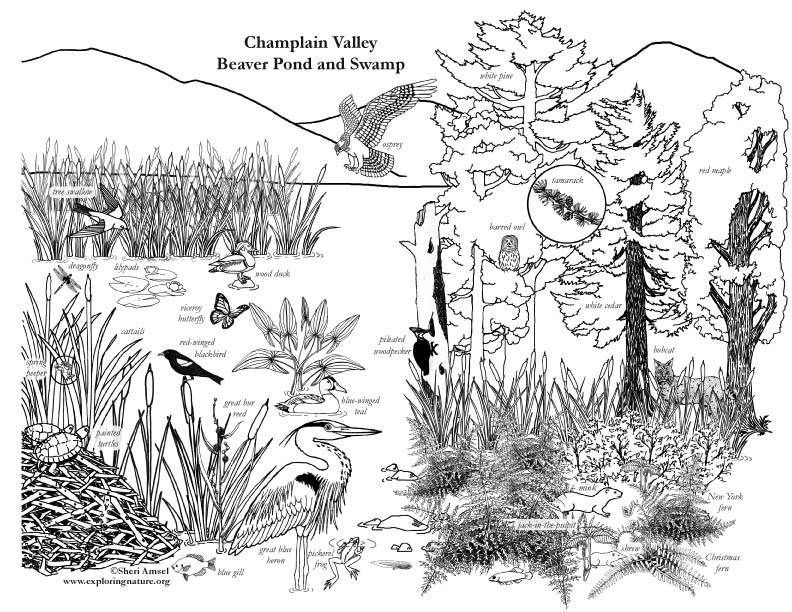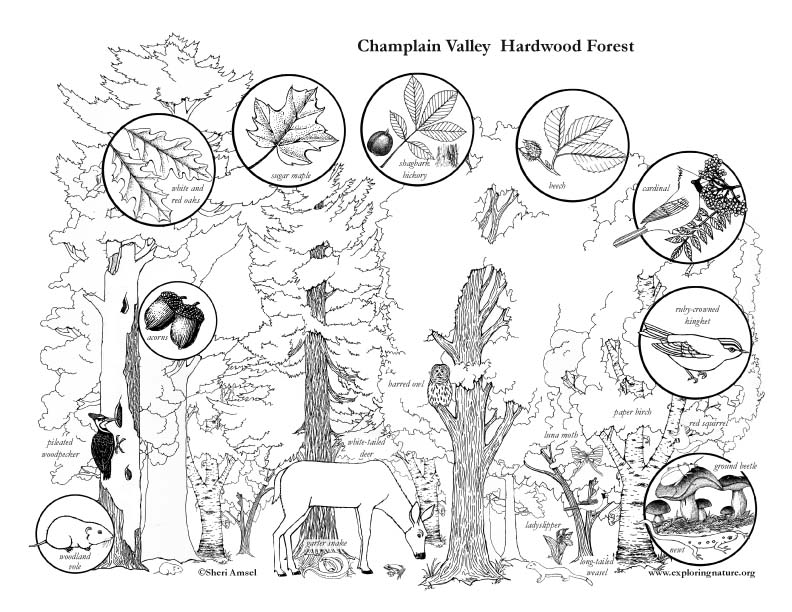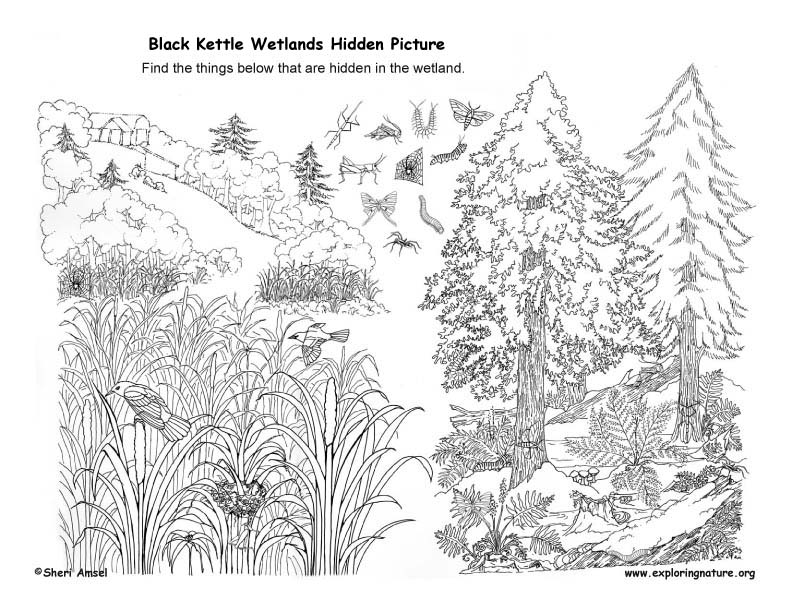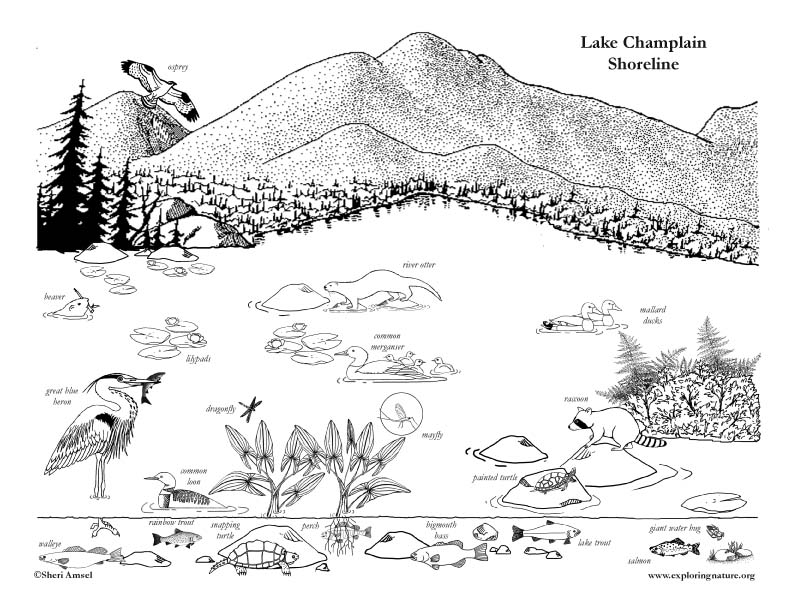

The Adirondack Mountains are in Upstate New York. They are in a 6-million-acre park protected as forever wild.
The Champlain Valley, in upstate New York, is a scenic landscape of forests, farms, fields, wetlands, and historic hamlets nestled in the foothills of the Adirondack Mountains. Perched on the shores of Lake Champlain, the natural habitats in the Champlain Valley are rich with biological treasures. The valley is a mixture of northern hardwood, hemlock, riparian and mixed forests, cattail marshes, beaver ponds, swamps, rocky streams, lakeshore habitats and open fields in various stages of succession from working farm to scrubby early forest.
The Champlain Valley provides habitat for many mammals including black bears, bobcats, fishers, otters, weasels, mink, coyote, red fox , gray fox, white-tailed deer and an occasional moose.
Amphibians includes spring peepers, wood frogs, green frogs, red efts, and spotted salamanders.
On ponds, in wetlands and along the lake are reptiles – snapping, painted, map and even the rare bog turtle. The rocky shore of lake Champlain is also home to the rare eastern timber rattlesnake.
Of the 193 birds that breed in the Adirondacks, 155 of them are found in the Champlain Valley. These include northern harriers, red-tailed and broad-winged hawks, bald eagles, barred, great horned, and eastern screech owls, kestrels, peregrine falcons, pileated, hairy and downy woodpeckers, great blue herons, bobolinks and meadowlarks to name just a few.
The forest, fields and wetlands come alive with a rainbow of spring wildflowers – trillium, lady slipper, hepatica, columbine, spring beauties, coltsfoot, bloodroot, trout lily, foam flower, partridgeberry, and Queen Anne's lace.
Some of the common trees found in the Champlain Valley include American elm, American sycamore, American beech, balsam fir, basswood (linden), bigtooth aspen, black spruce, butternut, eastern cottonwood, eastern hemlock, eastern red cedar, eastern white pine, hophornbeam (ironwood), maple (red), northern red oak, northern white cedar, paper birch, quaking aspen, red pine, red spruce, shagbark hickory, striped striped maple, sugar maple, white ash, white oak, white spruce, and yellow birch.
Map and Trail Description for Blueberry Hill Trails in Elizabethtown, NY Printable PDF:
Trail Description for all 50 Trails seen on the Champlain Valley Map (Printable PDF):
When you research information you must cite the reference. Citing for websites is different from citing from books, magazines and periodicals. The style of citing shown here is from the MLA Style Citations (Modern Language Association).
When citing a WEBSITE the general format is as follows.
Author Last Name, First Name(s). "Title: Subtitle of Part of Web Page, if appropriate." Title: Subtitle: Section of Page if appropriate. Sponsoring/Publishing Agency, If Given. Additional significant descriptive information. Date of Electronic Publication or other Date, such as Last Updated. Day Month Year of access < URL >.
Amsel, Sheri. "Champlain Valley, Adirondack Mountains, NY State" Exploring Nature Educational Resource ©2005-2024. March 27, 2024
< http://exploringnature.org/db/view/1726 >
